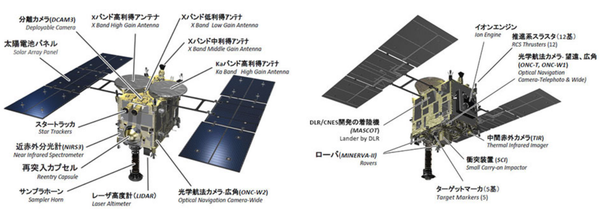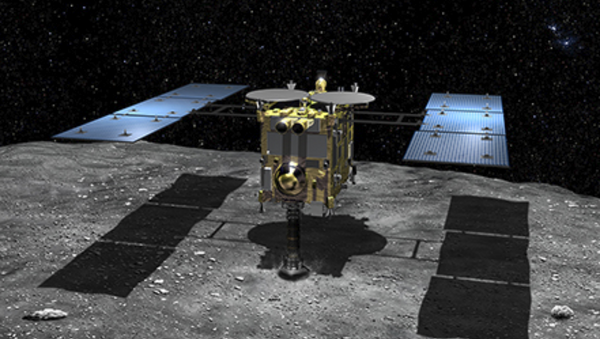JAXA project manager Yuichi Tsuda told reporters on Wednesday that the "landing point is decided, and how we're going to land is confirmed." He added that researchers "want to do our best to achieve this without making mistakes."
If all goes well, the probe will be joining two Minerva-II1 (Micro/Nano Experimental Robot Vehicle for Asteroid) rovers, which deployed from the probe in September 2018. Days after the Japanese rovers touched down, officials released video footage of the asteroid's rocky surface.
— HAYABUSA2@JAXA (@haya2e_jaxa) September 27, 2018
It'll also be linking up with the Mobile Asteroid Surface Scout Lander (MASCOT), which left the Hayabusa-2 mothership in October 2018.
AFP reported that the latest announcement regarding the Hayabusa-2 probe's touchdown comes months after officials repeatedly pushed back the date over concerns that the asteroid was more rugged and mountainous than previously thought.

"Hayabusa-2 will target a C-type asteroid ‘Ryugu' to study the origin and evolution of the solar system as well as materials for life by leveraging the experience acquired from the Hayabusa mission," JAXA explained in a statement, noting that the probe will be picking up from where its predecessor Hayabusa left off during its exploration of the asteroid Itokawa.
Hayabusa-2 was launched in December 2014, and is expected to stay on the asteroid for a period of 18 months before its scheduled return to Earth in 2020. The Hayabusa-2 mission has reportedly cost the agency roughly $260 million, according to AFP.

